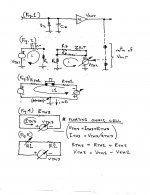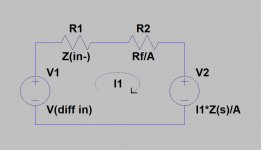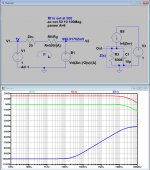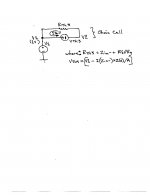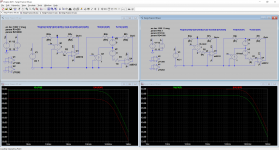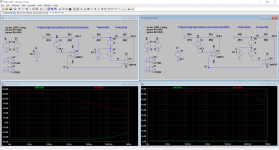Dear Dan wrote:
You are completely right, but I wanted to avoid going that way. There are already too many can of worms open.
Nature is "Unified", even if the theories about it are not. 😉
I don't know...should we "snubber" all our rectifiers??? Or use Bybees??? 😀
Dear Hans wrote:
There are many possible (probable?) causes to the T° "evolution", and some are catastrophic and unpredictable in nature, but the solar influence is very interesting: the Sun seems to have a will of its own and can be "silent" for decades, without storms. Think of the mini "ice age" of the 1700's whose most plausible explanation was that...and which coincides with the golden age of violin making 😀 😎 and for which as a humble violin collector and lover, I thank.
Sorry for OT here, but it seems recommended when the T° goes up.hehe.
Cheers,
M.
Ok.....but all these Astro events fold down to the here and now.
You are completely right, but I wanted to avoid going that way. There are already too many can of worms open.
Nature is "Unified", even if the theories about it are not. 😉
Interesting questions.It is argued that these far off events are cause of insignificant local effect....however these astro event influences are coming from all directions and contrive to cause noise....1/f noise ?.
Are electric phenomena 'directed/controlled'(ie rectified) noise (energies) ?.
Dan.
I don't know...should we "snubber" all our rectifiers??? Or use Bybees??? 😀
Dear Hans wrote:
Hi Max,
The climate is permanently changing with a rate of some 100.000 years between Ice Ages and so do sea levels for as long as our planet exists
Be we humans are convinced that we can stop this cycle.
There are many possible (probable?) causes to the T° "evolution", and some are catastrophic and unpredictable in nature, but the solar influence is very interesting: the Sun seems to have a will of its own and can be "silent" for decades, without storms. Think of the mini "ice age" of the 1700's whose most plausible explanation was that...and which coincides with the golden age of violin making 😀 😎 and for which as a humble violin collector and lover, I thank.
Sorry for OT here, but it seems recommended when the T° goes up.hehe.
Cheers,
M.
Last edited:
Following your post #2294 below to my post #2280
It seems that the use of the term "Current Mode Amplifier” isn’t rational to differentiate devices either Chris. The following perspective leads us back to comparing Zin- to Zout as seemingly the only way to justify a device being described as a v.f. or c.f. amplifier.
According to Thevenin's Theorem VThevenin1 (VTh1) and VThevenin2 (VTh2) can be considered connected to open circuit resistances of RTh1 and RTh2 respectively. Figure 2 shows these resistances as normally connected to some form of RL(load) as thereupon to complete the current path back to VThev(-). In the case of a CFA it can be considered to contain two Thevenin networks being connected with resistances in series. This results in a current (i1) passing in a loop from VTh1(-) to VTh2(+) (note that VTh2 is reversed as necessary for each VTh(x) to alternatively source and sink current). Figure 3 shows the absence of current flowing into ground, hence any voltage can be applied between node 1 to ground as having no consequence to the network.
Figure 4 shows a floating Thevenin translation from Figure 3, representing the foundation whereupon arguments can be made as to justify a CFA being described as a v.f. or c.f. amplifier. In a closed loop connection all that remains is a voltage source VTh3 connected across RTh3. From this perspective there is no independent variable. This is to conclude that a CFA cannot be identified as functioning either as a c.f. or v.f. amplifier under such circumstances.
In the closed loop, to claim that RTh3 is normally higher in a VFA than in a CFA doesn’t support any functional distinction that a device operates as a c.f. or a v.f. device. Middlebrook breaks into the network between RTh1 and RTh2 as only making a comparison of a relationship between them. RTh2 is considered as dominantly the independent variable, given that RTh2 can be the same in a VFA or CFA device. RTh1 is typically much higher than RTh2 in a VFA and lower than RTh2 in a CFA. However, to state that the device is operating on the basis of current or voltage is unrelated to its function when the feedback loop is reconnected.
From my perspective this makes it clear that the identification of a CFA isn't connected with any reality of functionality, rather only that Middlebrook provides a means to discriminate between them in terms of a comparative relationship as reliant upon values of RTh1 and RTh2 . In contrast those perceiving a CFA as literally functioning as a v.f. or c.f. device are intrinsically asserting current or voltage as an independent variable in Ohm's law under circumstances of a closed feedback loop.
What do you think Paul?
I guess our first problem is that our herd of cats can't even agree on how the darn thing works. So how are we supposed to choose a name for it?
But seriously, I can't find a definition of "Current Mode Amplifier." I believe I read a paper from Barrie Gilbert talking about designing with current rather than voltage transport modes, but this doesn't address feedback. And of course we have that unfortunate historical precedent of "current feedback" covering the case where a VFA gain block accepts feedback from the voltage across a current sense resistor in series with a load. I think that this is the basis for some of the resistance to the name and description of a CFA.
But I don't know where this leaves us all.
It seems that the use of the term "Current Mode Amplifier” isn’t rational to differentiate devices either Chris. The following perspective leads us back to comparing Zin- to Zout as seemingly the only way to justify a device being described as a v.f. or c.f. amplifier.
According to Thevenin's Theorem VThevenin1 (VTh1) and VThevenin2 (VTh2) can be considered connected to open circuit resistances of RTh1 and RTh2 respectively. Figure 2 shows these resistances as normally connected to some form of RL(load) as thereupon to complete the current path back to VThev(-). In the case of a CFA it can be considered to contain two Thevenin networks being connected with resistances in series. This results in a current (i1) passing in a loop from VTh1(-) to VTh2(+) (note that VTh2 is reversed as necessary for each VTh(x) to alternatively source and sink current). Figure 3 shows the absence of current flowing into ground, hence any voltage can be applied between node 1 to ground as having no consequence to the network.
Figure 4 shows a floating Thevenin translation from Figure 3, representing the foundation whereupon arguments can be made as to justify a CFA being described as a v.f. or c.f. amplifier. In a closed loop connection all that remains is a voltage source VTh3 connected across RTh3. From this perspective there is no independent variable. This is to conclude that a CFA cannot be identified as functioning either as a c.f. or v.f. amplifier under such circumstances.
In the closed loop, to claim that RTh3 is normally higher in a VFA than in a CFA doesn’t support any functional distinction that a device operates as a c.f. or a v.f. device. Middlebrook breaks into the network between RTh1 and RTh2 as only making a comparison of a relationship between them. RTh2 is considered as dominantly the independent variable, given that RTh2 can be the same in a VFA or CFA device. RTh1 is typically much higher than RTh2 in a VFA and lower than RTh2 in a CFA. However, to state that the device is operating on the basis of current or voltage is unrelated to its function when the feedback loop is reconnected.
From my perspective this makes it clear that the identification of a CFA isn't connected with any reality of functionality, rather only that Middlebrook provides a means to discriminate between them in terms of a comparative relationship as reliant upon values of RTh1 and RTh2 . In contrast those perceiving a CFA as literally functioning as a v.f. or c.f. device are intrinsically asserting current or voltage as an independent variable in Ohm's law under circumstances of a closed feedback loop.
What do you think Paul?
Attachments
What do you think, Chris?
Hierfi, I see sense in using the terms CFA and VFA to distinguish between circuits with and without the following characteristic: In a CFA, the major signal (as opposed to bias) current(s) flowing through the active device(s) connected to the feedback input is (are) equal to the difference between the output and ground feedback network signal currents. This relationship, along with Middlebrook’s D.I.T., makes it reasonable to allude to current feedback in this circuit. (This should not be construed as meaning that there is no voltage feedback in a CFA.) This classification could be extended all the way back to circuits designed 90 or so years ago. In a VFA, there is no such relationship, and no justification for claiming current feedback.
This is separate from the question of the relative and absolute amounts of current and voltage feedback in a circuit.
The value of one determines the value of the other. Which one ? Should not it be natural to give its name to the "kind" of feedback ?(This should not be construed as meaning that there is no voltage feedback in a CFA.)
Current error then ?In a VFA, there is [...] no justification for claiming current feedback.
At this point one might wonder if any of the major participants here want to design and build any DIY audio circuits (maybe have some fun?) rather than engage in this pointless discussion.
Figure 4 shows a floating Thevenin translation from Figure 3, representing the foundation whereupon arguments can be made as to justify a CFA being described as a v.f. or c.f. amplifier. In a closed loop connection all that remains is a voltage source VTh3 connected across RTh3. From this perspective there is no independent variable. This is to conclude that a CFA cannot be identified as functioning either as a c.f. or v.f. amplifier under such circumstances.
The danger when oversimplifying things is that the conclusions may also become questionable.
In this case, Vth2 is regarded as an independent voltage source which is of course not the case as shown below.
If, when leaving Zout as insignificant, we replace Rg/(Rf+Rg) by 1/A, then Rth2 = Rf/A and Vth2 = Vout/A.
Because Vout is I1*Z(s), Vth2= I1*Z(s)/A
Your Figure 3 can then be rewritten as in the image below.
Since current I1 feeds back into Vth2, I find it hard to follow your conclusion.
Hans
Attachments
The Big Bang Theory is a clumsy mathematical concoction lacking mythological elegance. Leaving the unanswerable questions of religious art to the charlatans would enhance scientific credibility.
A continuous system has no origin and no end so there is no need for a theory.
A continuous system has no origin and no end so there is no need for a theory.
In parallel with the ongoing exhaustive investigation, is there anybody interested in a more critical view of states of affairs than the popularized disseminations?
Mathematical spectra are sets of natural numbers that are the cardinalities of finite models of first order logic sentences. The complex Fourier integral and the inverse transform can only be solved for a few specified waveforms, and since the orders of an algebraic number field (Galois field) are prime numbers raised to positive integer powers, the representable frequency components can only take integer values divisible by the fundamental frequency. Also, the Fourier Transform has a pitiful functional range. Not much of a representation to be flabbergasted by in the first place, but the differential prime field extension model faces some more serious basal problems:
No first-order formal system of any size can specify the real numbers uniquely. Quantified relations are far more than the number system and logic can handle. First-order logic does not have the capacity to define integers over an infinite domain. The tautologous quantification theory is not decidable and not identifiable. The finite algebraic structure with partial operations has no identity element. There is no unique prime factorization and no unique characterization of representable sets. The Fourier transform does not fulfill the (seven) fundamental algebraic axioms for the autocorrelation functions and computing spectra and does not have an inverse function. Linear polynomials do not have distinct algebraic roots over the field of transcendental numbers.
The binomial coefficients are not in the integral domain of definition. The sequences are not in a list. The inverses are not in a field. Prime numbers are not the cardinalities of finite fields. A finite field cannot be ordered. The power set of the integers is uncountable. Vector spaces have no countable basis. Topological spaces do not form irreducible affine algebraic varieties. Formal sets do not form a recursive progression. Integers do not form field. Powers of primes do not form spectrum. There is no way for the series of the reciprocals of integers to be a spectrum, not even with elementary functions. π cannot be expressed as a ratio of two integers, harmonic frequencies cannot be multiples of the same fundamental frequency.
Extensional equivalence is not achievable. A countable model cannot be isomorphic to the field of complex numbers and cannot be complete. Whole cannot be constructed by the addition of parts diminishing in a constant ratio. An extension of finite whole cannot be infinite in respect of addition. There is no unique integer prime factorization up to permutation. No element can be matched to the subset and the subset will be undefined. Consecutive numbers cannot both be prime. The set of integers and the set of odd integers do not have the same cardinality. There cannot be a finite value for infinite sequences, every increasing sequence of positive integers must tend to infinity. Irrational numbers cannot be expressed as an infinite sum of rational numbers, and sequences of rational numbers does not converge to irrational numbers.
A strictly increasing bounded sequence cannot contain its limit as every term is strictly less than that limit. As the terms of the vector valued series with a constant ratio approaching zero become smaller and smaller, the partial sums grow without bound and the sine function becomes more and more oscillating. The harmonic series, whose generalization is the esoteric Riemann zeta function, diverges and never again lands on a whole number. The stochastic, vector-valued, singular, asymptotic, telescoping harmonic series is sturdily divergent. Besides, uniform convergence does not imply monotonicity, continuity, differentiability and that the domain has a pairing function or derivative at any point.
A prime number raised to an irrational algebraic number is transcendental by the Gelfond-Schneider theorem. Netto showed that a unit interval cannot be mapped bijectively onto the unit square. The Schwartz Impossibility Theorem states that it is impossible to define the product of distributions according to the associative law. The Cauchy sequence is an unmanageable equivalence class. The Cauchy and the Weierstrass criteria, the Dirichlet and Neumann boundary conditions and the rest of the criteria and conditions have no validity and are unimposable. Operation on quantities does not obey the law of identity, additivity, commutativity, associativity, distributivity and simplification. There does not exist any power-associative algebra and even less any commutative differential algebra.
Identity calculus is a pipe dream about a complex isomorphism extending to a homomorphism of unital algebra. Complete and uniform formalism, one to one correspondence between the elements of an infinite set and a proper subset, converging infinite geometric series, continuous inverse functions, compatible and well-behaved metric spaces, all incumbent on Cauchy`s woolly idea of complete sequential enumeration, denote no more than an unfulfilled romantic aspiration.
Nobody has ever seen a Lebesgue, Banach or Hilbert function space, a cornerstone of functional analysis, whose weird symbolic logic implanted into physical theory represents the ultimate level of fiction, appallingly bizarre even by set-theoretical standards.
Nevertheless, there is no shortage of fabricated "proofs" vehemently asseverating that the Fourier series indeed converges with all of its derivatives to an infinitely differentiable complex periodic orthogonal function.
More precision, fewer systematic deficiencies and contradictions would not improve the truthfulness of functional analysis, its connection to reality is effectively cut at a pretheoretical stage. The inconsistencies merely show that the idea does not follow its principle.
Mathematical spectra are sets of natural numbers that are the cardinalities of finite models of first order logic sentences. The complex Fourier integral and the inverse transform can only be solved for a few specified waveforms, and since the orders of an algebraic number field (Galois field) are prime numbers raised to positive integer powers, the representable frequency components can only take integer values divisible by the fundamental frequency. Also, the Fourier Transform has a pitiful functional range. Not much of a representation to be flabbergasted by in the first place, but the differential prime field extension model faces some more serious basal problems:
No first-order formal system of any size can specify the real numbers uniquely. Quantified relations are far more than the number system and logic can handle. First-order logic does not have the capacity to define integers over an infinite domain. The tautologous quantification theory is not decidable and not identifiable. The finite algebraic structure with partial operations has no identity element. There is no unique prime factorization and no unique characterization of representable sets. The Fourier transform does not fulfill the (seven) fundamental algebraic axioms for the autocorrelation functions and computing spectra and does not have an inverse function. Linear polynomials do not have distinct algebraic roots over the field of transcendental numbers.
The binomial coefficients are not in the integral domain of definition. The sequences are not in a list. The inverses are not in a field. Prime numbers are not the cardinalities of finite fields. A finite field cannot be ordered. The power set of the integers is uncountable. Vector spaces have no countable basis. Topological spaces do not form irreducible affine algebraic varieties. Formal sets do not form a recursive progression. Integers do not form field. Powers of primes do not form spectrum. There is no way for the series of the reciprocals of integers to be a spectrum, not even with elementary functions. π cannot be expressed as a ratio of two integers, harmonic frequencies cannot be multiples of the same fundamental frequency.
Extensional equivalence is not achievable. A countable model cannot be isomorphic to the field of complex numbers and cannot be complete. Whole cannot be constructed by the addition of parts diminishing in a constant ratio. An extension of finite whole cannot be infinite in respect of addition. There is no unique integer prime factorization up to permutation. No element can be matched to the subset and the subset will be undefined. Consecutive numbers cannot both be prime. The set of integers and the set of odd integers do not have the same cardinality. There cannot be a finite value for infinite sequences, every increasing sequence of positive integers must tend to infinity. Irrational numbers cannot be expressed as an infinite sum of rational numbers, and sequences of rational numbers does not converge to irrational numbers.
A strictly increasing bounded sequence cannot contain its limit as every term is strictly less than that limit. As the terms of the vector valued series with a constant ratio approaching zero become smaller and smaller, the partial sums grow without bound and the sine function becomes more and more oscillating. The harmonic series, whose generalization is the esoteric Riemann zeta function, diverges and never again lands on a whole number. The stochastic, vector-valued, singular, asymptotic, telescoping harmonic series is sturdily divergent. Besides, uniform convergence does not imply monotonicity, continuity, differentiability and that the domain has a pairing function or derivative at any point.
A prime number raised to an irrational algebraic number is transcendental by the Gelfond-Schneider theorem. Netto showed that a unit interval cannot be mapped bijectively onto the unit square. The Schwartz Impossibility Theorem states that it is impossible to define the product of distributions according to the associative law. The Cauchy sequence is an unmanageable equivalence class. The Cauchy and the Weierstrass criteria, the Dirichlet and Neumann boundary conditions and the rest of the criteria and conditions have no validity and are unimposable. Operation on quantities does not obey the law of identity, additivity, commutativity, associativity, distributivity and simplification. There does not exist any power-associative algebra and even less any commutative differential algebra.
Identity calculus is a pipe dream about a complex isomorphism extending to a homomorphism of unital algebra. Complete and uniform formalism, one to one correspondence between the elements of an infinite set and a proper subset, converging infinite geometric series, continuous inverse functions, compatible and well-behaved metric spaces, all incumbent on Cauchy`s woolly idea of complete sequential enumeration, denote no more than an unfulfilled romantic aspiration.
Nobody has ever seen a Lebesgue, Banach or Hilbert function space, a cornerstone of functional analysis, whose weird symbolic logic implanted into physical theory represents the ultimate level of fiction, appallingly bizarre even by set-theoretical standards.
Nevertheless, there is no shortage of fabricated "proofs" vehemently asseverating that the Fourier series indeed converges with all of its derivatives to an infinitely differentiable complex periodic orthogonal function.
More precision, fewer systematic deficiencies and contradictions would not improve the truthfulness of functional analysis, its connection to reality is effectively cut at a pretheoretical stage. The inconsistencies merely show that the idea does not follow its principle.
Best so far! Although I fail to see what this effort brings you; but even if someone reads it, no or very little harm will be done so it is mostly harmless.
Looking forward to your next copy-paste effort!
Jan
Looking forward to your next copy-paste effort!
Jan
Hierfi, I see sense in using the terms CFA and VFA to distinguish between circuits with and without the following characteristic: In a CFA, the major signal (as opposed to bias) current(s) flowing through the active device(s) connected to the feedback input is (are) equal to the difference between the output and ground feedback network signal currents. This relationship, along with Middlebrook’s D.I.T., makes it reasonable to allude to current feedback in this circuit. (This should not be construed as meaning that there is no voltage feedback in a CFA.) This classification could be extended all the way back to circuits designed 90 or so years ago. In a VFA, there is no such relationship, and no justification for claiming current feedback.
This is separate from the question of the relative and absolute amounts of current and voltage feedback in a circuit.
Thanks Chris. A VFA doesn't seem remotely close to being identifiable as a CFA.
In case you might wonder wether this works, here is an example for Rg=100 Ohm and Rf=500 Ohm giving A=6 and I made Z(in-)=25 Ohm.
I have also added a DC voltage of 1V at the input, thereby making the DC voltage visible at Vth2.
Hans
Hi Hans. Below is the Thevenin equivalent of your example. The only difference is that you have introduced a V1 voltage to ground to the floating Ohmic cell that was identified in my post of #2462. I have simply changed RTh3 and VTh3 in accordance with your values. Given that an Ohmic cell still exists there isn't an independent variable, hence this still leads to the conclusion that a CFA cannot be identified as functioning either as a c.f. or v.f. amplifier.
Attachments
Your drawing is completely correct, although somewhat less readable in this compressed form.Hi Hans. Below is the Thevenin equivalent of your example. The only difference is that you have introduced a V1 voltage to ground to the floating Ohmic cell that was identified in my post of #2462. I have simply changed RTh3 and VTh3 in accordance with your values. Given that an Ohmic cell still exists there isn't an independent variable, hence this still leads to the conclusion that a CFA cannot be identified as functioning either as a c.f. or v.f. amplifier.
LTspice cannot function without a connection to GND and the 1V DC was added as an extra means to control the correct working.
But now you can see in your Vth3 that I(Zin-) is part of it, which was not at all obvious in your previous posting.
This is the most essential part of them all when you want to draw conclusions which you did concerning VF or CF.
Hans
Last edited:
Your drawing is completely correct, although somewhat less readable in this compressed form.
LTspice cannot function without a connection to GND and the 1V DC was added as an extra means to control the correct working.
But now you can see in your Vth3 that I(Zin-) is part of it, which was not at all obvious in your previous posting.
This is the most essential part of them all when you want to draw conclusions which you did concerning VF or CF.
Hans
Sure Hans. Your example made that clear.
Looking forward to your next copy-paste effort!
Me too, my first algebra teacher was Fr. Hilbert (Jesuit of course) brilliant man. We made the obvious joke in class, last I heard he was still teaching at a Navajo reservation in his 90's.
The two groups genetically drift apart slowly (almost always because they are physically separated by a mountain, a sea or other barrier) until the point that they can no longer interbreed, at which point they are officially two separate species.
Jan
If you were the only local mate option then I would understand the need to get over a mountain to find somebody new to breed with.
My new hero wrote:
Yet this unprovable Theory was thrown by a "priest". 😱
Though as a Latin I believe that laws are there to be broken, this "theory" does brake some so said "law"...if it weren't for "exception fallacies" almost no theory could survive scrutiny...
Referring to post #2470, I couldn't have said it better! 😀😀😀
Question all thy teaching.
M.
The Big Bang Theory is a clumsy mathematical concoction lacking mythological elegance. Leaving the unanswerable questions of religious art to the charlatans would enhance scientific credibility.
A continuous system has no origin and no end so there is no need for a theory.
Yet this unprovable Theory was thrown by a "priest". 😱
Though as a Latin I believe that laws are there to be broken, this "theory" does brake some so said "law"...if it weren't for "exception fallacies" almost no theory could survive scrutiny...
Referring to post #2470, I couldn't have said it better! 😀😀😀
Question all thy teaching.
M.
In a CFA, the major signal (as opposed to bias) current(s) flowing through the active device(s) connected to the feedback input is (are) equal to the difference between the output and ground feedback network signal currents.
The active device current is the opposite of the difference between output and ground feedback network signal current.
It is conform with a strict application of Kirchhoff law on node In- where Rf, Rg and active device are connected.
This relationship, along with Middlebrook’s D.I.T., makes it reasonable to allude to current feedback in this circuit. (This should not be construed as meaning that there is no voltage feedback in a CFA.) This classification could be extended all the way back to circuits designed 90 or so years ago. In a VFA, there is no such relationship, and no justification for claiming current feedback.
This is separate from the question of the relative and absolute amounts of current and voltage feedback in a circuit.
What I understand of the MDIT is that if feedback network impedance is greater than In- open loop impedance, current loop gain is lower than voltage loop gain. Consequently, if feedback network impedance is lower than open loop In- impedance, voltage loop gain is lower than current loop gain. So the classification given by the test depends on external componants and not only to its topology, it can be noted the the 2 behaviours are obtained with quite normal resistors value.
This is obtained with CFA in inverter mode, which is not the most common use of CFA, where the In- impedance is at its lowest value.
If we run the same test with a signal at In+, voltage or current signals, results are always the same : voltage loop gain is always lower than current loop gain.
My conclusion : In "normal" operating mode, the main feedback mode of so called CFA is voltage as the voltage loop gain is far lower than current loop gain. Of course it exists a current which can be called feedback current, this current is the result of voltages applied on active device input and output.
Attachments
Yet this unprovable Theory was thrown by a "priest".
As far as I know, "unprovable" applies to all theories.
- Home
- Amplifiers
- Solid State
- Current Feedback Amplifiers, not only a semantic problem?
